This American created the Grand Ole Opry — here's the fascinating story
George D. Hay hosted a radio program in Nashville called "The Barn Dance" that became "The Grand Ole Opry." Today, the Opry is the longest running radio show in the world. Here's the amazing story.
George D. Hay possessed a passion for American music and a talent for turning a phrase.
His gifts popularized the performances of small-town musicians who rose from the hills and hollers of the American heartland to achieve national acclaim.
The radio broadcaster reshaped American pop culture as the founder of the Grand Ole Opry. It’s a phrase he coined in a moment of on-air inspiration in 1927.
"Hay had a very romantic and nostalgic vision of rural life, music and culture, and he carefully cultivated that in the early Opry programming," Opry archivist Jen Larson told Fox News Digital.
JOHNNY CASH IS KING IN NASHVILLE: HIS TUNES, LEGACY AND LEGEND RULE THE MUSIC CITY
"Hay had his finger on the pulse" of those connections, she said.
The Opry — as in, the radio program, the brand and the live-music venue in Nashville, Tennessee — are all still thriving today.
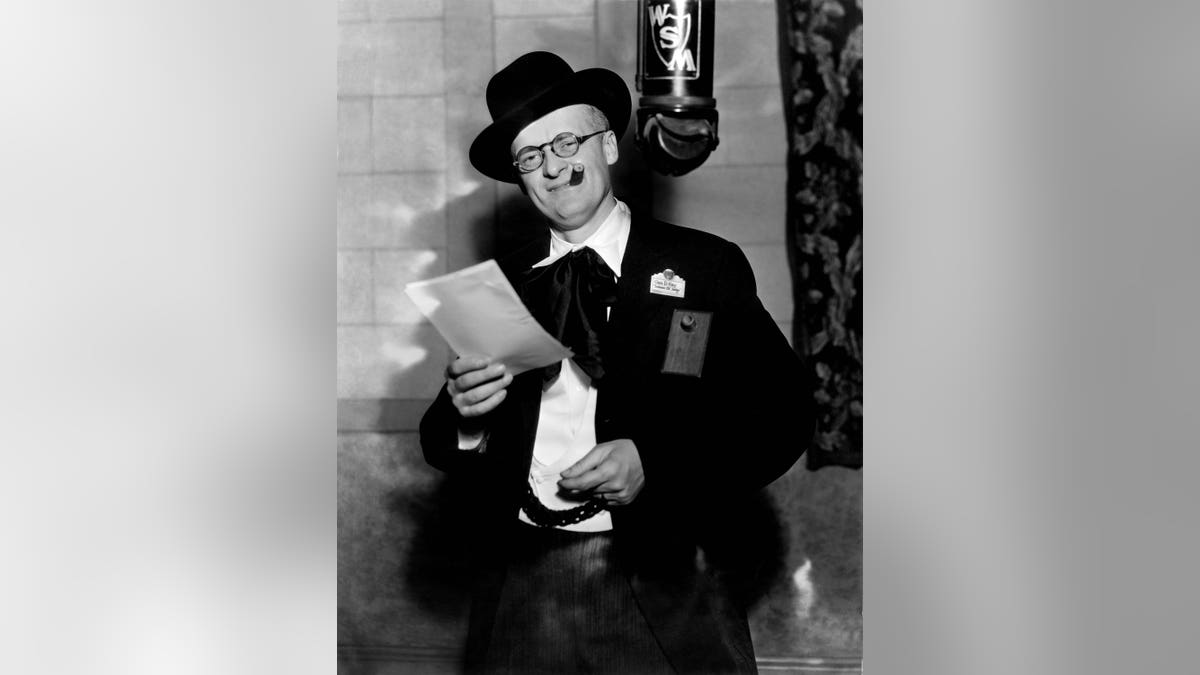
Grand Ole Opry founder George D. Hay, signature whistle under his arm, with a WSM microphone hanging to the right of his head. (Grand Ole Opry Archives)
The Grand Ole Opry is a repository of everything from traditional American mountain music to modern country tunes performed by the genre’s biggest stars.
Hay was known as the "Solemn Old Judge" — a journalistic alter-ego he adopted while he was still a print reporter in Memphis, Tennessee, covering local courts.
He courted the persona in his dress, often sporting a wide-brimmed black hat and dark suit.
GRAND OLE OPRY CELEBRATES AMERICA — AND NOW IT'S COMING BACK STRONG
Hay segued into radio and hosted a show in Chicago called the "National Barn Dance" that earned him national acclaim.
He was voted most popular radio announcer in the nation in a 1924 Radio Digest poll.
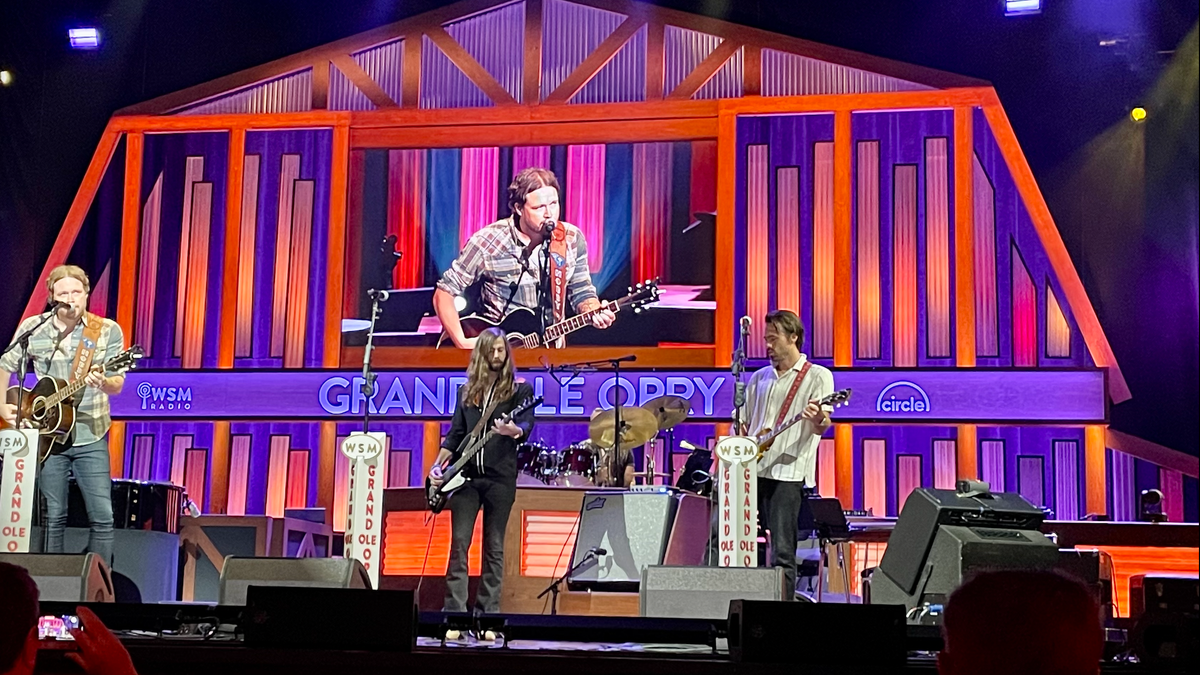
A Thousand Horses perform at the Grand Ole Opry in Nashville on Aug. 27, 2022. The Grand Ole Opry moved from the Ryman Auditorium in downtown Nashville to its current Opryland location in March 1974. (Kerry J. Byrne/Fox News Digital)
Hay was famed for his enthusiastic style, his colorful phraseology and the distinct steamboat whistle he blew along with the station call letters.
NASHVILLE'S GLORY DAYS ARE RIGHT HERE, RIGHT NOW: 10 AMAZING FACTS ABOUT THE MUSIC CITY
The "Solemn Old Judge" took his act — and "The Barn Dance" — to upstart WSM radio in Nashville in 1925, where the Opry was born and still lives today.
Hay "was a remarkable visionary and colorful romantic who played a vital role in the commercializing and promotion of country music," writes the Country Music Hall of Fame.
Ozark Mountain music provided inspiration
George D. Hay was born in Attica, Indiana, on Nov. 9, 1895.
He served in the Army in World War I, though it appears little is known of his service record.
But one account of his life credits an incredible postwar experience for inspiring Hay’s love of traditional American songcraft — for inspiring the Grand Ole Opry.
Hay was on a reporting assignment in the Ozark Mountain town of Mammoth Spring, Arkansas, in 1919 to report on a local boy who was killed in the war.

Very early Grand Ole Opry broadcast from 1925 when it was still WSM's "Barn Dance." The "Solemn Old Judge" George D. Hay, left, is at the microphone with a whistle while Uncle Jimmy Thompson is seated with a fiddle. A performance by the elderly fiddler inspired a hugely positive response from listeners. (Grand Ole Opry archives)
While there, "he came across a man who lived in a boxcar and was a farmer who had seven or eight children," reports the George D. Hay Society.
"That man was also a fiddle player and invited Hay to a hoedown at a neighbor’s cabin. … The fiddle player, a guitar player and a banjo player played a series of songs all night long until the crack of dawn the following morning, with some 20 or so other people dancing to the music."
The birth of the Grand Ole Opry came in a moment of apparently unscripted inspiration on Dec. 10, 1927.
The society went on, "Hay was so impressed with the local talent and their enthusiasm, which planted the seed for his life’s greatest accomplishment."
The birth of the Grand Ole Opry came in a moment of apparently unscripted inspiration on Dec. 10, 1927.

The Ryman Auditorium, dubbed the Mother Church of Country Music, hosted the Grand Ole Opry from 1943 to 1974. It was built in 1892 as the Union Gospel Tabernacle, lending to the reverence the Opry gave to country music. (Kerry J. Byrne/Fox News Digital)
Writes the Opry of the transformative moment in pop-culture history: "Following an NBC broadcast of Walter Damrosch's Music Appreciation Hour [a classical music program], George D. Hay proclaimed on-air, ‘For the past hour we have been listening to the music taken largely from the Grand Opera, but from now on we will present the grand ole opry.’"
The phrase caused an instant sensation.
Hay quickly renamed the broadcast the Grand Ole Opry. It has never looked back.
Today, among other claims to fame, the Opry is the longest-running radio broadcast on the planet, according to Guinness World Records.

George Dewey Hay, right, the "Solemn Old Judge" and founder of the Grand Ole Opry on WSM radio, inspects a box of Purina brand eggs with Dr. Lew Childre circa 1951 in Nashville, Tennessee. (Bob Grannis/Getty Images)
"Hay found he had a flair for this kind of work and brought a sense of showmanship and style to it," writes the Country Music Hall of Fame.
"He chanted the call letters, scripted his shows and blew an imitation steamboat whistle (dubbed ‘Hushpuckena’) to announce the start of the evening’s shows."
Opry becomes ‘a nation-spanning giant'
The Grand Ole Opry grew so popular that the broadcast was moved to the Ryman Auditorium in downtown Nashville in 1943.
The Opry built its own theater and country-music campus, Opryland, in 1974, about 10 miles east of the city center.
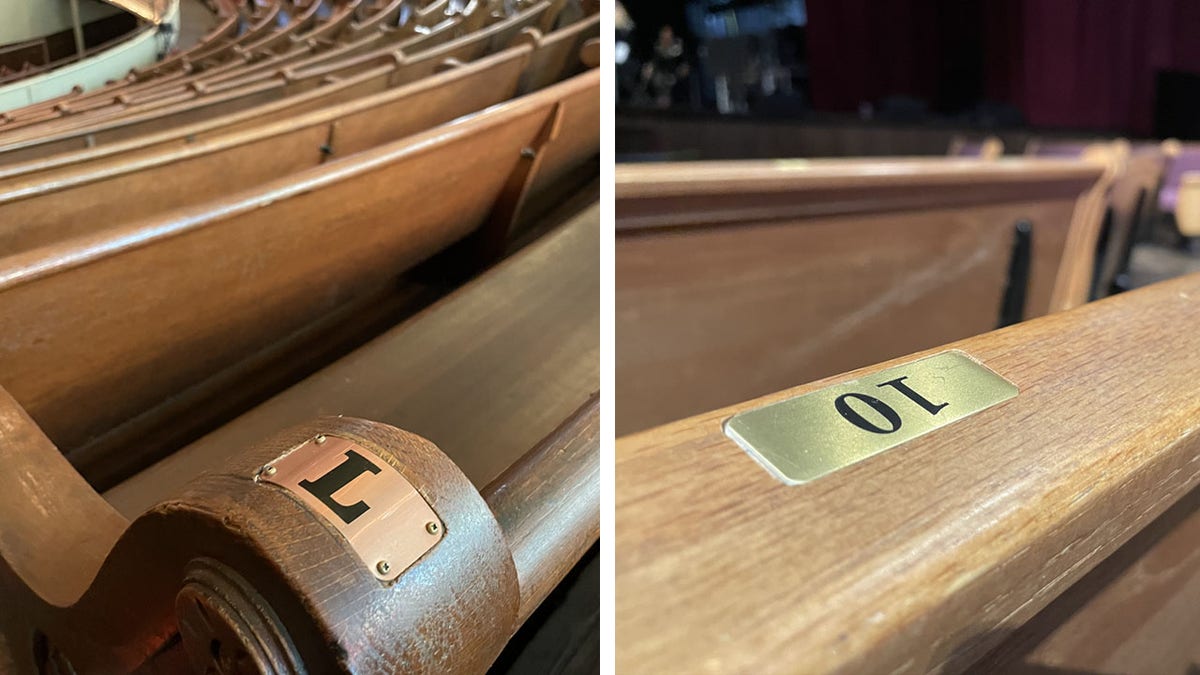
The Ryman Auditorium in downtown Nashville was built in 1895 as the Union Gospel Tabernacle. It still has its original pew seats, at left. The Grand Ole Opry in Opryland, which opened in 1974, pays homage to this history with its pew seats today, right. (Kerry J. Byrne/Fox News Digital)
The Ryman was originally a church, built in 1892 as the Union Gospel Tabernacle.
The gospel aesthetic contributed greatly to the reverential air the Opry would give, and still gives, to country music.
It is still known today as "the mother church" of country music and remains a popular Nashville tourist attraction.
JOHN RICH ON NASHVILLE: 5 FAVORITE SPOTS FROM THE MUSIC CITY INSIDER
The growth of the Opry surged in 1932, when WSM, the first clear-channel station in Tennessee, added a 50,000-watt transmitter.
The new technology made WSM "a nation-spanning giant," says the station's website.
The Grand Ole Opry could now be heard across large swaths of the country, far beyond its Nashville home. It became a national institution.
Hay's faith in "good-time string-band music" captured the nation's nostalgia.
"By 1933 some of the bands were so well known across the country that they were able to tour theaters as far away as Iowa," writes the Country Music Hall of Fame.
The broadcast became "a hearth around which people could gather" in a rapidly changing nation, when people were leaving farms to move to cities or their children were serving overseas in war, said Larson, the Opry archivist.
Hay's faith in "good-time string-band music" captured the nation's nostalgia, she said.
Becoming a member of the Grand Ole Opry is today a coveted sign of success in the music industry.
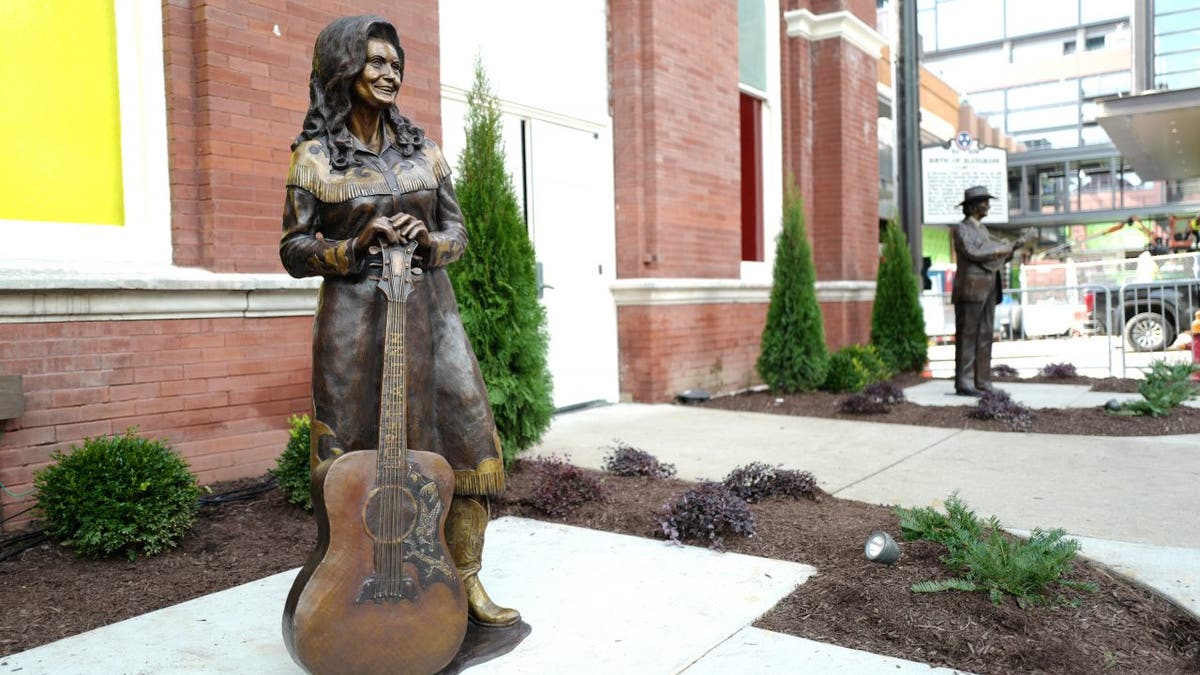
A statue of the legendary country artist Loretta Lynn is seen outside the Ryman Auditorium on Oct. 20, 2020, in Nashville, Tennessee. (Jason Kempin/Getty Images)
The Opry boasts only 71 current members.
Those members range from American icons Loretta Lynn, Dolly Parton and Ricky Skaggs to current young hitmakers such as Luke Combs and Kelsea Ballerini.
The newest member, songwriter Don Schlitz, was inducted by host Vince Gill on the stage of the Grand Ole Opry on Aug. 30.
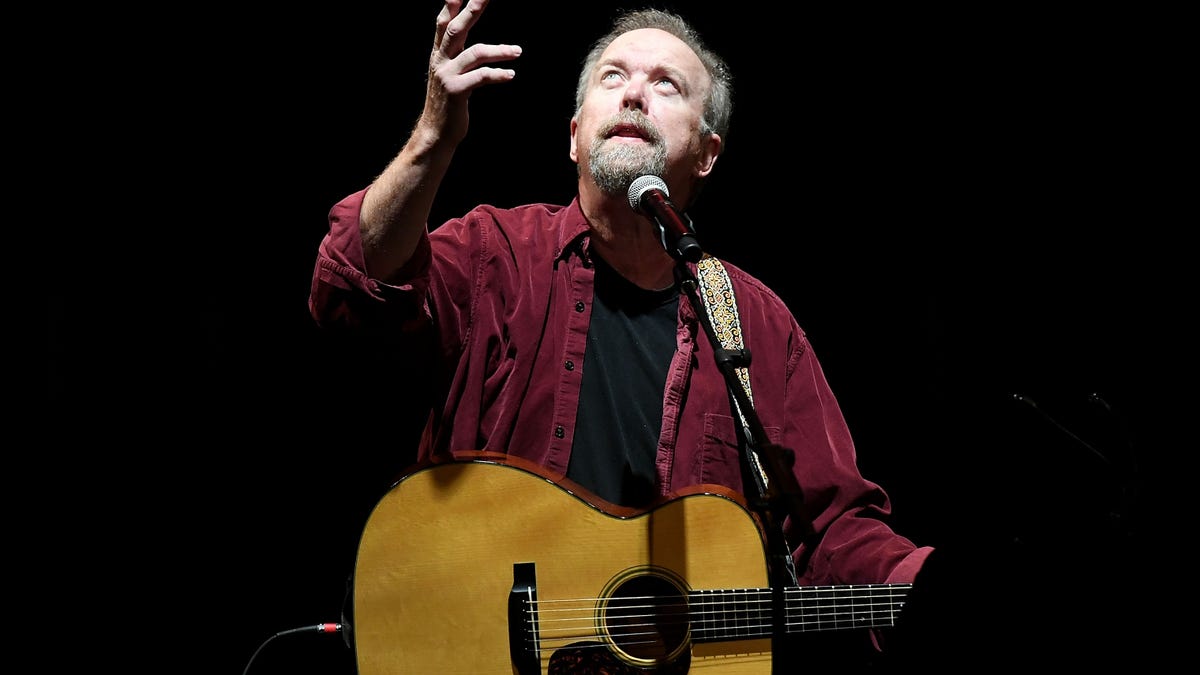
Singer/songwriter Don Schlitz, best known for writing the Kenny Rogers crossover 1978 hit "The Gambler," is the newest member of the Grand Ole Opry. He was inducted on Aug. 30, 2022. (Mickey Bernal/Getty Images)
Schlitz is best know for writing "The Gambler," which became a No. 1 hit and American music standard for Kenny Rogers in 1978.
Honored by ‘towering figures in country’
George Hay died in his Virginia Beach apartment on May 9, 1968.
He was 72 years old.
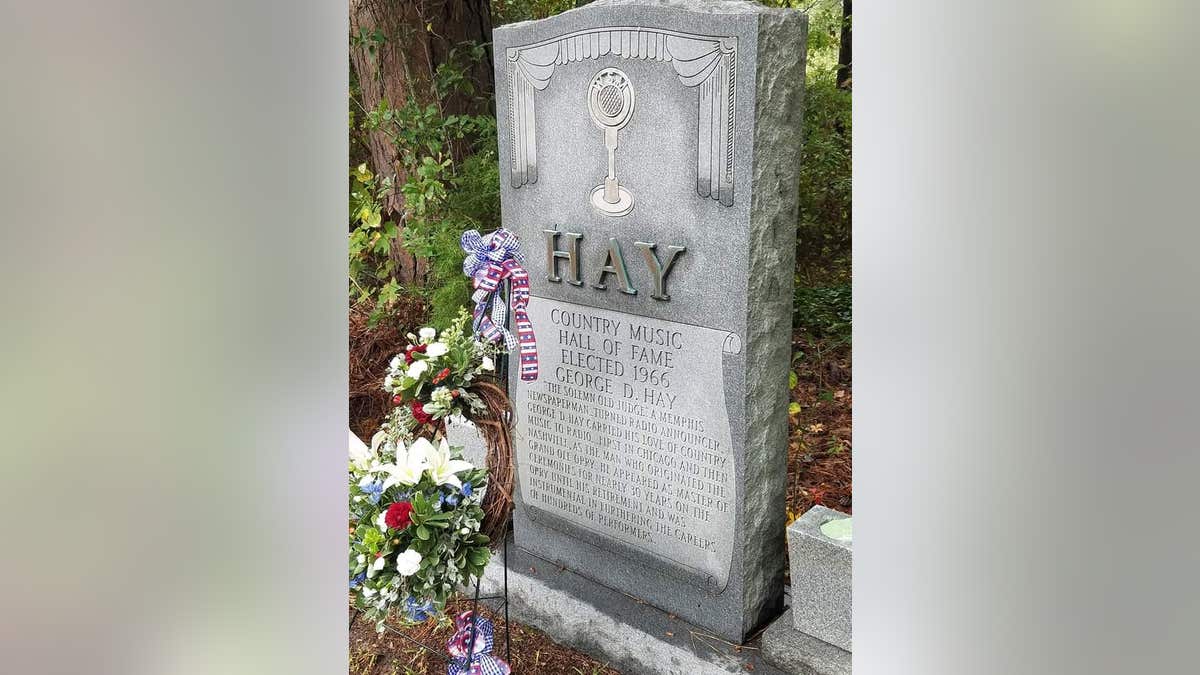
George D. Hay, founder of the Grand Ole Opry, is buried at Forest Lawn Cemetery in Norfolk, Virginia. The Virginia Country Music Association tends to his grave and hosts a wreath-laying ceremony in Hay’s honor each year. (Courtesy Virginia Country Music Association)
Hay remained the grandmaster of the Grand Ole Opry until 1956 and was inducted into the Country Music Hall of Fame in 1966.
CLICK HERE TO SIGN UP FOR OUR LIFESTYLE NEWSLETTER
He’s buried today at Forest Lawn Cemetery in Norfolk, Virginia.
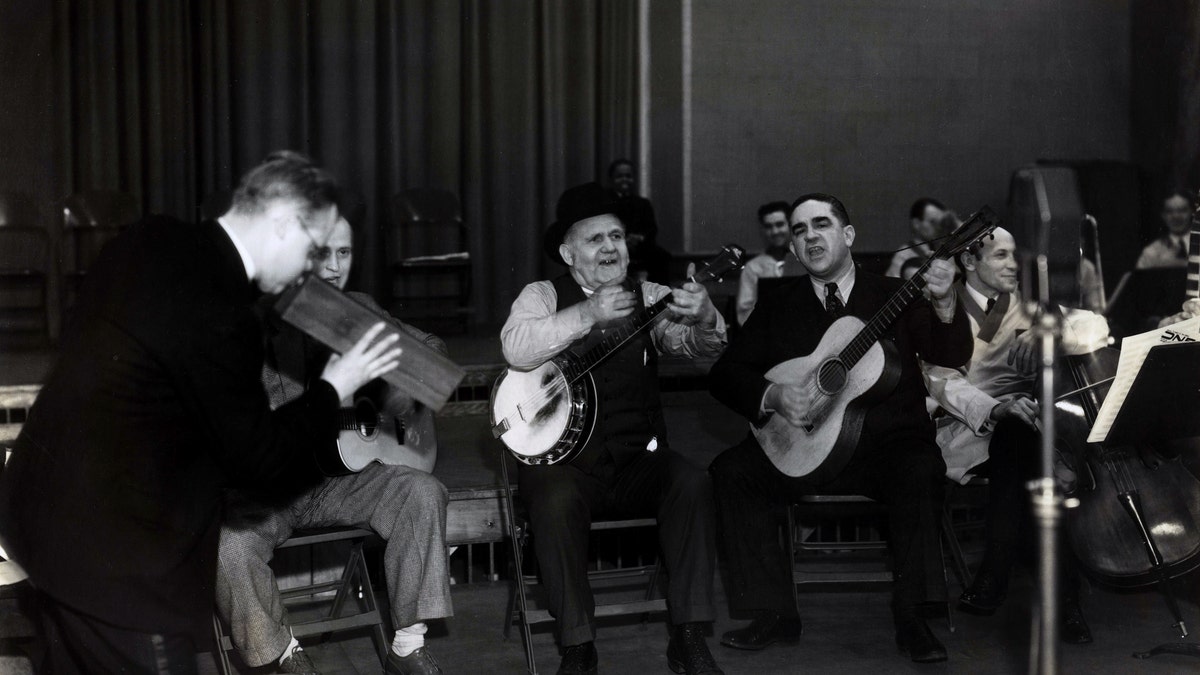
Broadcaster George Hay, left, with performers Uncle Dave Macon with Paul Warmack in an early WSM broadcast. (Grand Ole Opry archives)
"His gravesite monument took on a life of its own," reads a 2017 tribute to Hay in the Virginia-Pilot.
"Towering figures in country, including Johnny Cash and Kitty Wells, stopped at Hay's memorial when they were in town for performances to pay respects to the man whose vision helped make their careers possible."
The Virginia Country Music Association tends to his grave and hosts a wreath-laying ceremony in Hay's honor at the site each year.
CLICK HERE TO GET THE FOX NEWS APP
The next ceremony is Oct. 9, association spokesman Ken Poole told Fox News Digital.
"We owe it to him for preserving the tradition of American country music," said Poole.
To read more stories in this unique "Meet the American Who…" series from Fox News Digital, click here.










































